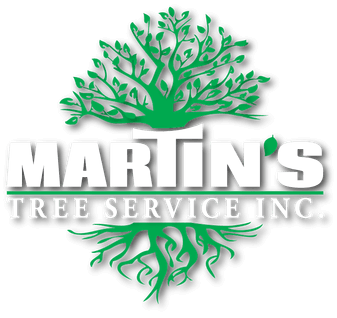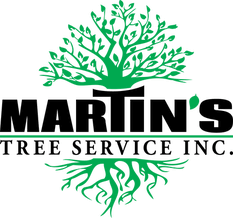
Every property owner faces this challenge sooner or later: how do you tell the difference between dead and dying trees, and when is it time to take action with removal? Making the right decision can protect your property, promote safety, and even benefit the surrounding environment. At Martin’s Tree Service, we understand how important it is for homeowners and businesses to recognize the difference, spot warning signs early, and consult an expert before making major tree-related decisions.
Choosing the right approach is about more than aesthetics. It can mean the difference between encouraging healthy growth and facing unexpected property damage or personal risk. Let’s explore the distinctions between dead and dying trees, practical tree removal tips, and the valuable role these trees can play in your local ecosystem.
Spotting Unhealthy Trees: Dead or Dying
Knowing the subtle and obvious differences between dead and dying trees is crucial for safety and landscape health. While both may appear similar at first glance, there are clear signs that set them apart.
Dying Trees
A tree in decline may show visible stress, but parts of it could still be alive and capable of recovery with proper care. Look for:
- Leaf discolouration: Leaves may yellow or brown irregularly and drop out of season, often in scattered patches.
- Sparse foliage: Thinning canopies and fewer leaves overall indicate declining health.
- Growth problems: New shoots may appear weak, short, or malformed.
- Bark abnormalities: Peeling, cracking, or splitting bark can point to disease, though underlying tissue may still be green and moist.
Dead Trees
Dead trees are beyond recovery and present a greater risk to your property due to structural weakness. Warning signs include:
- No foliage: A complete lack of leaves during the growing season is a key indicator.
- Brittle branches: Dead branches snap easily and may fall with minimal force.
- Discoloured and dry wood: Underneath the bark, the wood is dry, grey, and lacks green tissue.
- Fungi growth: Mushrooms or large fungal bodies at the base signal advanced decay.
For instance, a tree with scattered dead branches but new green shoots is likely dying, not dead. A tree with no leaf growth and crumbly wood at its base is almost certainly dead.
By recognizing these signs early, you can identify unhealthy trees before they become hazards. This knowledge also helps when consulting professionals for tree removal guidance.

Evaluating the Risks
Identifying a tree’s condition is only the first step. Deciding whether removal is necessary requires careful assessment. A dying tree may recover with intervention, while a dead tree poses immediate risks to safety and property.
Consider these factors:
- Structure and location: Is the tree leaning over a house, driveway, or utility line? Falling branches or a collapsing tree can cause major damage.
- External hazards: Dead trees are structurally unstable and more likely to fail during storms or high winds.
- Overall health: If more than half the canopy is gone or major limbs are dead, recovery chances drop significantly.
Professional arborists at Martin’s Tree Service use proven methods to assess risks and provide clear recommendations tailored to your property.
Evaluating trees means balancing practicality with environmental responsibility. From assessment to action, property owners can make safer decisions while respecting the local ecosystem.
Tree Removal Tips for Safety and Success
Tree removal is not as simple as cutting down a trunk and hauling away debris. It involves careful planning, proper equipment, and safety measures. Attempting DIY removal can lead to injury, property damage, or legal issues. Hiring professionals ensures the process is handled safely and efficiently.
Here are key tips to consider:
- Consult an expert: Professionals can determine if alternatives like pruning or bracing may be sufficient and provide an honest timeline for removal.
- Understand the quote: Look for services that clearly outline what’s included, from risk assessment and permits to debris removal and site cleanup.
- Check safety and insurance: Certified crews follow strict safety protocols and carry proper insurance, protecting you from liability.
- Ask about full-service removal: Efficient services handle everything, including sectioning trees, stump removal, and site cleanup.
- Plan timing: Trees posing immediate risk should be removed promptly to prevent accidents or property damage.
Working with a trusted service like Martin’s Tree Service ensures all these factors are covered, giving you peace of mind.
Ecological Value of Dead Trees
Although dead trees can be hazardous, they also provide significant ecological benefits. Considering these benefits can help you make balanced, responsible decisions.
- Wildlife habitat: Dead trunks and branches serve as shelter for birds, bats, insects, and small mammals. Many species rely on decaying wood for nesting and feeding.
- Soil enrichment: As the tree decomposes, it returns nutrients to the soil, supporting new growth and maintaining soil health.
- Biodiversity: Standing dead wood, or snags, increases plant and animal diversity in your area, creating a richer local ecosystem.
- Natural cycles: Leaving a dead tree in a remote corner of your property mirrors natural forest cycles, supporting long-term environmental health.
For example, a dead tree far from buildings can provide valuable habitat for woodpeckers, while fallen logs enrich the soil in your garden. Integrating ecological perspectives with safety measures allows you to make informed choices.
When to Trust Professionals
If you notice signs of decline or death, it’s important to act wisely. Professional guidance is essential when a tree poses potential risks.
- Falling branches: Dead or structurally compromised trees may shed limbs unpredictably.
- Storm preparedness: Weak trees are more likely to fall during high winds or storms, which are common in southern Ontario.
- Legal and insurance considerations: Failing to remove dangerous trees can lead to insurance complications or city citations.
At Martin’s Tree Service, we provide a comprehensive approach that includes risk assessment, evaluation of ecological value, and full debris removal. Our transparent communication and detailed methodology help homeowners and business owners feel confident throughout the process.
Making Informed Decisions
Property owners across Kitchener, Waterloo, Cambridge, and Guelph can protect their landscapes, maintain safety, and support thriving ecosystems by understanding the difference between dead and dying trees. Knowing when to take action allows you to prevent property damage and personal risk while appreciating the environmental benefits trees offer.
When in doubt, consulting with professionals ensures the right balance between safety and sustainability. Martin’s Tree Service is ready to provide guidance, expert removal, and ongoing support to help you maintain a safe and beautiful property.
Contact Martin’s Tree Service today for a professional tree assessment. With our expertise, you can make informed decisions about tree care, removal, and management that protect your property and the local environment.
Steve Martin

